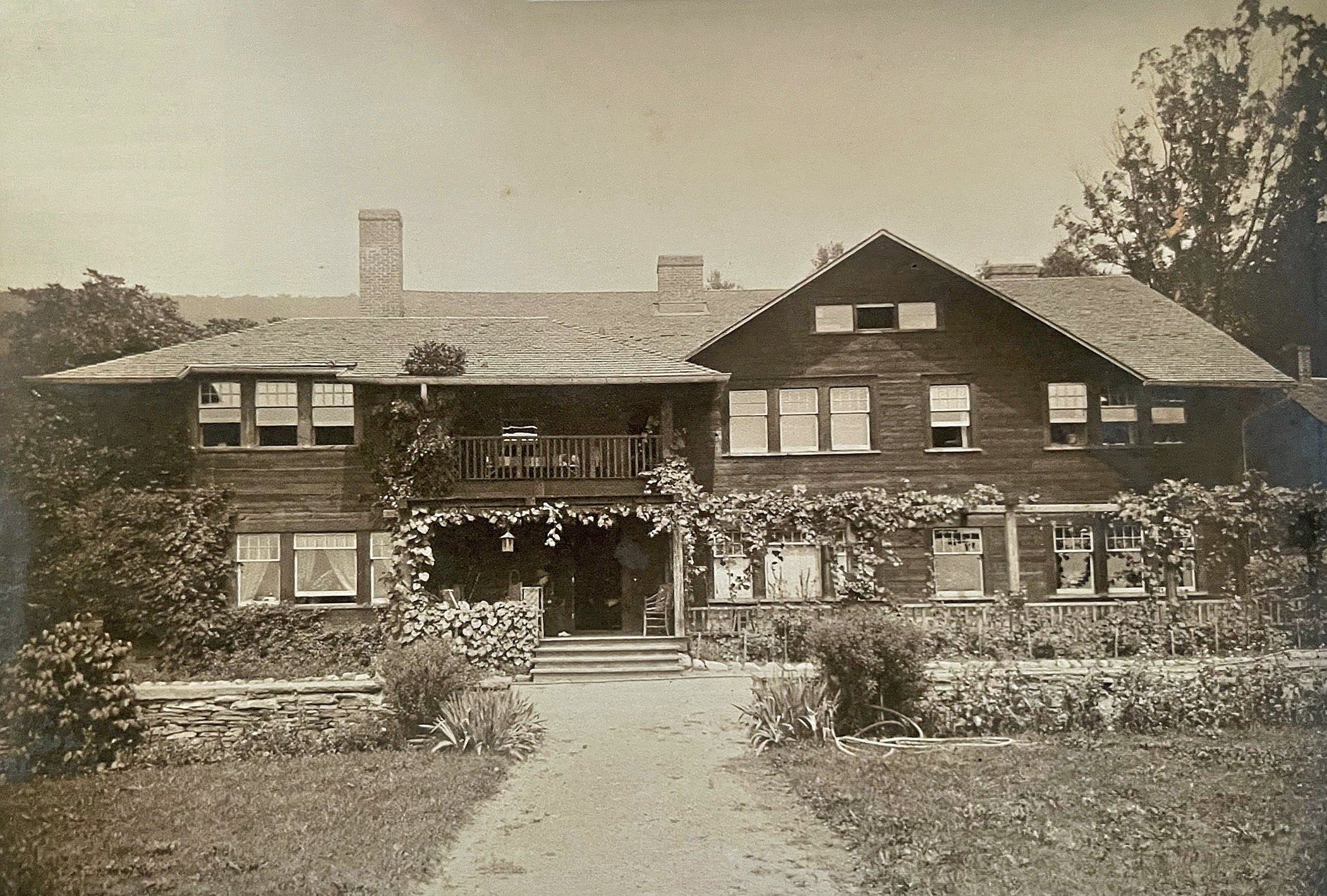In the winter of 1902, construction of the Byrdcliffe Arts Colony began on Mount Guardian just outside the hamlet of Woodstock, NY. Seven farms, 1500 acres in all, were purchased for the enterprise by a wealthy Englishman named Ralph Radcliffe Whitehead. By the time it was completed in 1903, 30 buildings stood, comprising what has been referred to as a “textbook example” of a utopian Arts and Crafts Community.
The Arts and Crafts movement began in England in the final quarter of the 19th century as a reaction against rapid urbanization and industrialization. Its most passionate and well-known English spokesmen were art critic John Ruskin, and artist William Morris. They shared a rural, utopian ideal based on a brotherhood of artistic collaboration. They believed that life would have enhanced meaning if work reflected the nobility thought to have been lost when machines eliminated the need for the skills and art of hand craftsmanship.
Ironically, it was those who benefited from the great wave of 19th century industrialization who had the means to rebel against it. Ralph Whitehead (1854 – 1929), the son of a wealthy mill owner from Yorkshire, England came directly under the influence of utopian ideas when he studied with Ruskin at Oxford, and later traveled with him in Europe. It is from Whitehead’s enduring vision to found his own “brotherhood of artists” community that Byrdcliffe owes its existence.
Whitehead and Jane Byrd McCall, an artist from a prominent Philadelphia family, married in 1892 and settled in America. After faltering starts in California and Oregon, Whitehead, writer Hervey White, and artist Bolton Brown crisscrossed the country searching for the perfect site. In 1902 Brown found the natural beauty of the Catskills and their proximity to New York City an ideal site for an arts colony.

White Pines, Byrdcliffe Arts Colony, 1909.
Byrdcliffe, taken from the middle names of Ralph and Jane, was fully built and operating by the summer of 1903. Byrdcliffe’s unique buildings resemble low rambling cottages characterized by their dark stained indigenous pine siding, gentle sloping roofs with wide overhangs, and ribbons of windows painted Byrdcliffe blue.
The years from 1903 to 1910 saw a great deal of activity, with teachers and students dedicated to their various endeavors in myriad creative disciplines. Social life revolved around twice weekly dances in the Studio and on the White Pines lawn. By the close of its first decade internal strife among Whitehead, White, and Brown took its toll. Whitehead’s autocratic tendencies and disagreements among people living in a close community ultimately contributed to the demise of the “brotherhood of artists”.
Over the years many notable visitors have been drawn to Byrdcliffe: feminist author Charlotte Perkins Gillman, New Dealer Harry Hopkins, educator John Dewey, naturalist John Burroughs, musicians Leon Barzin and Bob Dylan, authors Will Durant and Thomas Mann, painters Milton and Sally Avery, George Bellows, and Philip Guston, photographer Eva Watson-Schutze, sculptor Eva Hesse, journalists Walter Weyl and Heywood Broun, poet Wallace Stevens, actress helen Hayes, and entertainer Chevy Chase.
Thanks to the generosity of Whiteheads son, Peter, the Byrdcliffe Arts Colony was bequeathed in 1976 to the Woodstock Guild of Craftsmen (founded in 1938) and operating today under the name Woodstock Byrdcliffe Guild.
Today the organization continues to be a thriving year-round home to an ever expanding community of artists.
By Alf Evers about the Byrdcliffe Arts Colony.
Byrdcliffe Arts Colony on Upstatehistorical.org, curated by Thomas A. Guiler.
WHITE PINES TOUR: Saturday, September 23, 2023 | 12 – 1 pm
Join us for the last tour of the 2023 season. Step inside White Pines, the original home of Byrdcliffe’s founders Ralph and Jane Whitehead, with Byrdcliffe Historian Henry T. Ford and discover how this 1902 utopian arts and crafts colony began. Meet on the porch of White Pines at 454 Upper Byrdcliffe Road. Suggested donation: $10
PRIVATE TOURS OF THE BYRDCLIFFE ARTS COLONY
Byrdcliffe provides walking tours of the historic arts colony and parts of our permanent collection by appointment. Visit White Pines, the original home of Byrdcliffe’s founders Ralph and Jane Whitehead, where you can see the former ceramics studio used from 1915-1926, preserved in its original state. Visit the Barn and class studios, as well as the historic Theater; availability varies. (There is no indoor access to artist-residency buildings and cottages while in use. ) Please call to schedule an appointment at least one month in advance of the date you’d like to visit.
Tours require a 6-person minimum. Call 845.679.2079 to schedule a tour.










Copyright © 2023 Woodstock Byrdcliffe Guild. All rights reserved.